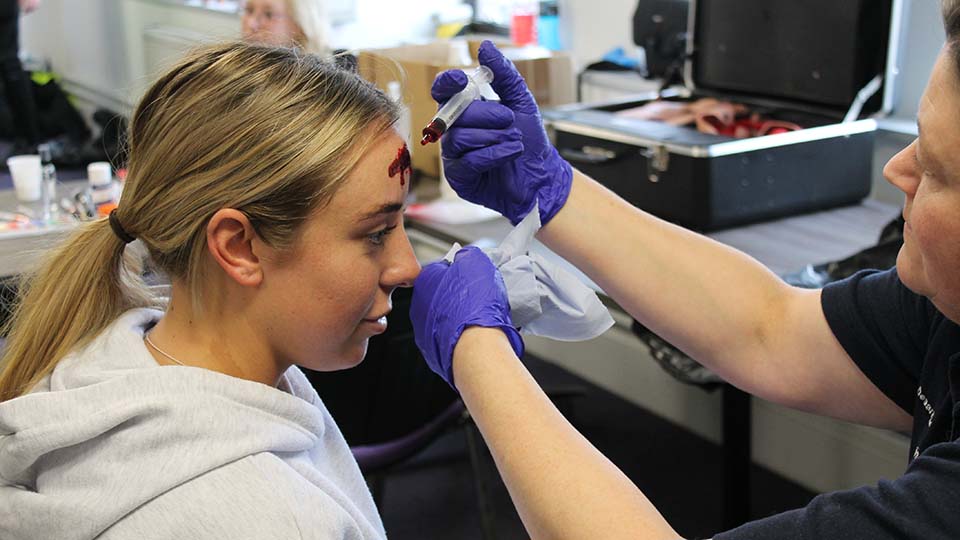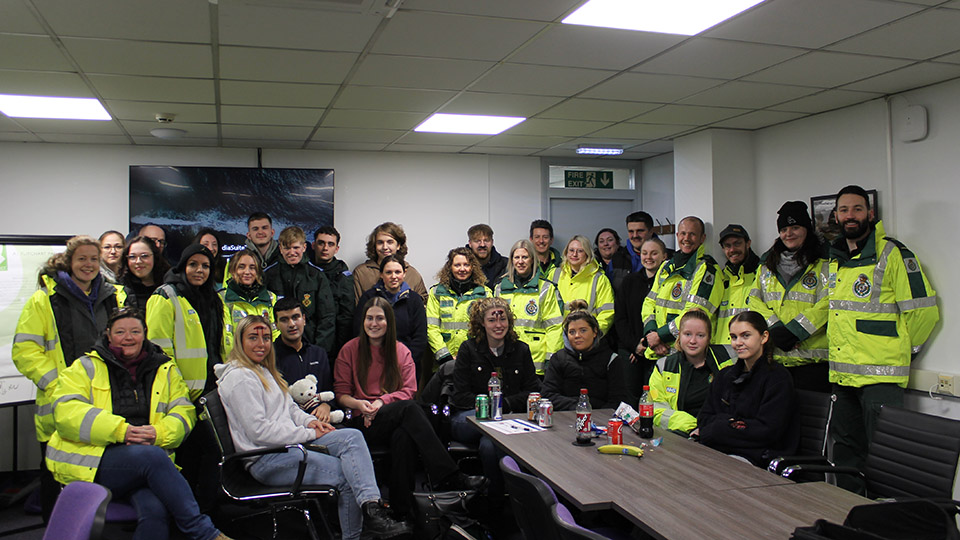Student paramedics from the University of Huddersfield have worked alongside the emergency services in a highly realistic simulation of an incident at Leeds-Bradford Airport.
The Paramedic Science students and their tutors took part in the night-time scenario near the perimeter of the airport that also involved the Airport Fire Service, airport operations and security, airport managers and external agencies such as Leeds City Council.
The exercise played out a scenario where a passenger plane had skidded off the runway while landing in bad weather, then breaching the perimeter fence before coming to rest in a car park.
Conditions on the night were a true test of everyone involved, with plummeting temperatures and snow closing in around Leeds-Bradford just as the exercise began. The exercise used the fuselage of an old plane located some distance from the runway and the rest of the airport, which continued to run normally while the exercise took place.
Discover more about Paramedic Science at the University of Huddersfield
Students played the roles of cabin crew and passengers trapped on the plane whilst others manned the Casualty Clearing Station to triage and treat casualties – enabling them to use their paramedic skills and knowledge to date.
Technicians from the technical services team within the School of Human and Health Sciences supported the event by providing the paramedic students with equipment needed to assess and treat simulated patients.
Further realism was brought to the scenario by using moulage to create realistic, medically accurate injuries to ensure all those involved had a fully immersive experience. It is the third simulated incident that Huddersfield paramedic students have participated in since the start of 2022, following on from two exercises held on campus and visits to North Yorkshire Fire Service’s training facility.
 Make up was applied to mimic the kinds of injuries the student paramedics would have to respond to
Make up was applied to mimic the kinds of injuries the student paramedics would have to respond toThe students worked as part of a team from the Yorkshire Ambulance Service, with involvement from West Yorkshire Fire and Rescue Service and West Yorkshire Police. The exercise also included liaising with agencies including the council, media, airport security and airlines to create an accurate simulation of an incident that would require a rapid response.
Sakina Waller, Senior Lecturer in Paramedic Science, said, “This exercise provided the opportunity for students to experience Emergency Services interoperability, in accordance with the JESIP – Joint Emergency Service Interoperability Programme- principles. The students were immersed in a situation requiring collaboration with multiple other responder agencies.
“It was an excellent platform for students to consolidate technical skills such as patient assessment and management, as many of the simulated patients had traumatic injuries. The training exercise provided students with significant real-time experience in understanding of risk, communication, and situational awareness.”
 The student paramedics were fully briefed about the exercise
The student paramedics were fully briefed about the exerciseLBA Resilience and Emergency Manager, Neil Perkis, said, "We are delighted to be working with the University of Huddersfield in what is our biennial emergency exercise. We obviously hope this type of event never happens, but a level of preparedness is essential.
"I am sure that the students involved got a true reflection of the immense pressures placed upon the emergency services but also on bystanders and those working at the airport, as well as friends and family of those on board.”
This simulated learning opportunity was supported by funding from Health Education England.
